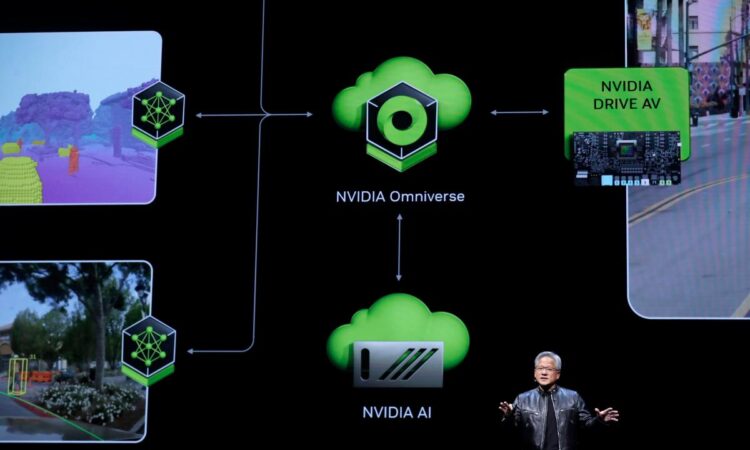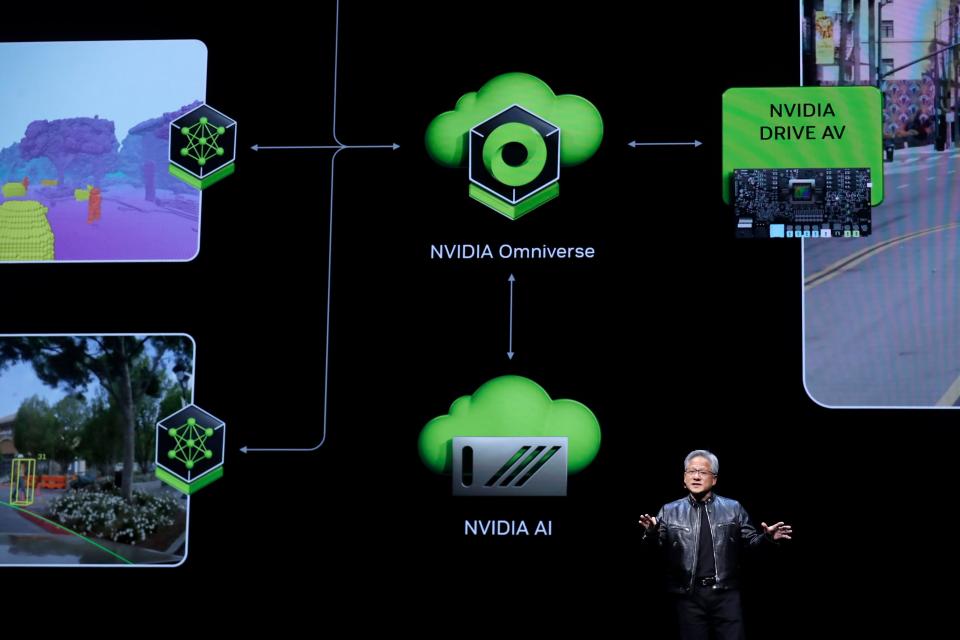

Earlier this week Nvidia (NVDA) completed a 10-for-1 stock split, following its original announcement in May. This means the company’s share price is now trading around its lowest level since late 2022.
The artificial intelligence (AI) firm is the sixth member of the S&P 500 (^GSPC) to announce a stock split just this year, up from four in 2023.
Analysts believe this is a sign of more to come in the technology sector.
They have pointed to Meta Platforms Inc (META) as one of next companies to possibly announce a stock split. The tech conglomerate, which owns and operates Facebook, Instagram, Threads, and WhatsApp is the only firm in the “Magnificent Seven” that has not yet split shares.
Trading at over $500 a share, Meta is considered “ripe for a split,” Ken Mahoney, president of Mahoney Asset Management, said.
Meta’s stock has surged more than 450% from its 2022 low, driven by AI interest, buybacks, and a new dividend.
Read more: How to invest in the Indian stock market
What is a stock split?
A stock split is a decision by a company’s board of directors to increase the number of shares outstanding by issuing more shares to current shareholders (without diluting the value of their stakes).
The number of outstanding shares rises and the price per share decreases proportionally, while the market capitalisation and value of the company stays the same.
For example, in a 2-for-1 stock split, a shareholder receives an additional share for each share held. So, if a company had 1 million shares outstanding before the split, it would have 2 million shares outstanding after a 2-for-1 split.
In Nvidia’s case, the company split its shares on a 10-for-1 basis based on the closing share price on Friday 7 June of $1,210. Shareholders were awarded 10 shares for each of their existing shares, and the stock was trading at around $120 per share on Monday 10 June.
On the other side of the coin, reverse stock splits happen when a company reduces the number of shares outstanding, thereby raising the market price of each share.
Why do they happen?
Stock splits often result in a share price increase as small investors and employees perceive the stock as more affordable. Retail traders in particular find this appealing as they may only be able to buy shares in full on their trading platforms or within ISAs, with limits on buying fractional shares.
Companies often perform stock splits to make their stock more accessible to a wider range of investors,” explains Sam North, market analyst at investment platform eToro. “A stock split can reduce the price per share, making it more affordable for individual investors to buy.”
Lower share prices are also useful to companies when it comes to remunerating staff members with share options. The move also brings a company’s share price to a similar range to others in the same sector.
Read more: What are share repurchases?
Stock splits can often improve trading liquidity, effectively boosting demand for the stock and driving up prices.
Another possible reason for the price increase is that a stock split provides a signal to the market that the company’s share price has been increasing over time — people may assume this growth will continue in the future. This further lifts demand and prices.
Reverse stock splits often happen when a company wants to meet the minimum requirements to remain listed on an exchange. Firms can get ousted off an exchange if their price drops too far, so the move can help a company survive and recover from a rough patch.
Recent stock splits
Several high-profile stock splits have taken place this year including Walmart (WMT), Chipotle Mexican Grill (CMG), Lam Research (LRCX), Sony Group (SONY), Amphenol Corporation (APH), and Cintas (CTAS).
Retailer Walmart announced a 3-for-1 stock split on 30 January, and completed its first split in 25 years after the market closed on February 23, while Chipotle Mexican Grill approved a 50-for-1 split on March 19, which will take effect after the closing bell on 25 June.
Corporate identity uniforms company Cintas approved a 4-for-1 stock split on 2 May 2and shares will begin trading on a split-adjusted basis after the market close on 11 September.
Sony’s board greenlit a 5-for-1 stock split last month, which goes into effect on 8 October, while electronic components firm Amphenol revealed a 2-for-1 forward split on 20 May, which was completed on 11 June.
Wafer fabrication equipment company Lam Research also approved a 10-for-1 stock split, which will become effective after closing bell on 2 October.
Read more: The stock market rally has been all about large caps
It comes as Amazon (AMZN) has so far split its stock three times in its history. The latest one was announced in March 2022 on a 20:1 basis.
Other big-tech names such as Apple (AAPL) and Tesla (TSLA) have also carried out stock splits in the past.
What does the future hold?
Investors should weigh up stock splits on a case-by-case basis. Overall, historical stats indicate that they tend to outperform the S&P 500 index over the next 12 months, but of course it can all be subject to change.
However, stock splits like Nvidia, and now potentially Meta, can make them more attractive candidates for the price-weighted Dow Jones Industrial Average (^DJI). Currently, no stock in the Dow index trades above $500 a share.
The Bank of America (BoA) (BAC) has already predicted more splits in the tech sector, including the likes of Broadcom Inc (AVGO), Super Micro Computer Inc (SMCI), KLA Corp (KLAC), and Netflix Inc (NFLX).
Watch: What are SPACs?
Download the Yahoo Finance app, available for Apple and Android.






